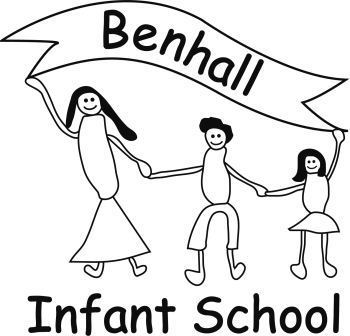History at Benhall
At Benhall Infant School, we believe that the teaching of history raises children’s curiosity of the past. Children who learn key events in history learn from the past so that they can live in the present and impact the future.
Key features of effective history teaching
We understand that children need to be emersed in history to understand what the period was like. With this knowledge they can compare their own experiences to those they learn about in history.
The key principles of effective history teaching includes:
- Nurturing the children’s curiosity
- Integrating history with other subjects where natural connections occur
- maintaining pace of learning
- allowing the children to present their knowledge/ findings in their preferred style – connection to writing curriculum
- Continuous teacher assessment through objective led planning
- early identification of children at risk of falling behind, linked to the provision of effective interventions.
How we teach history
- At Pre-School, children are curious about their own lived experiences. They talk about their past and their relationships with family members, identifying the things they love. Their teachers support them in discussing how they have changed.
- In reception history teaching responds to the children’s interests and experiences. Teachers reinforce their knowledge of their own history. Teachers teach the children the skills they need to compare their experiences to those of their parents.
- In KS1 the children and becoming more aware of events in history and use their increasing independence in research. They are encouraged to formulate questions that build on the knowledge the teacher imparts during a history input.
- Regular history inputs are used to teach the sequence of knowledge and skills within understanding the world (EYFS) and history curriculum (NC), building on prior learning.
- History inputs last between 10 and 20 minutes.
- Provision activities, paired with objective led planning, facilitate opportunities for children to rehearse what they have learned. Teachers use these provision tasks to assess children against the learning objective – adding scaffolding to support or challenge.
- Resources and texts are high quality and support the children’s knowledge and skills within this part of the curriculum.
The child’s progression as a historian:
At Pre-school, I am a mini historian who is fascinated by my own history. I am excited to look a pictures of me when I was younger and recall what my life was like then.
I am able to:
- Begin to differentiate between past and present.
- Talk about past and present events in my own life and the lives of family members (e.g., I went for a walk with my daddy).
- Talk about and describe a special time that I experienced for example birthday, holiday, trip out.
In reception, I am an early historian who is fascinated to find out about and compare people and events from the past (recent and ‘a long time ago’) to my life today. I am excited to read and learn about the past through a variety of fiction and non-fiction texts. I will learn about the past through experiences that bring it to life – performing, role play, singing, visual and audio sources. I will learn to share my point of view about characters and events as well as respecting others’ points of view.
I am able to:
- Use time related words in conversation (last week I went for a walk with Mummy).
- Sort a collection of objects into old and new and begin to talk about my choices.
- Make plans for the immediate future (after lunch I am going to build a rocket).
- Know and can talk about the differences between past and present events in my own life and the lives of family members.
- Know the difference between past and present events in my own life and some reasons why other people’s lives were different in the past.
- Give reasons about how I have sorted objects. I can answer questions about the past from the books I have shared.
- Use books to answer my own questions about the past.
In KS1, I am a historian who is fascinated by the past and curious about how the past affects the present. I am inspired to follow my own interests and research them independently. I understand how the people and events that I have learnt about fit together in chronology of time.
I am able to:
- Explain my understanding of the changes within and beyond my living memory.
- Share what I have learnt about the lives of significant people who have made a difference to the world.
- Describe a significant event, person, or place in local history.
- Use everything I have learnt to compare various times in history.
- Sequence artefacts found closer together in time.
- Recognise why people did things, why events happened and what the consequences were. Compare how valuable/ reliable primary sources are by listening to or reading two interpretations of the past.
- Use primary and secondary sources to answer questions and ask questions about the past. Create more detailed timelines to show the sequence of events/periods of time.
- Carry out own research to discover more about the past.
- Understand how all the periods of time, people and events fit together on a chronological timeline.
